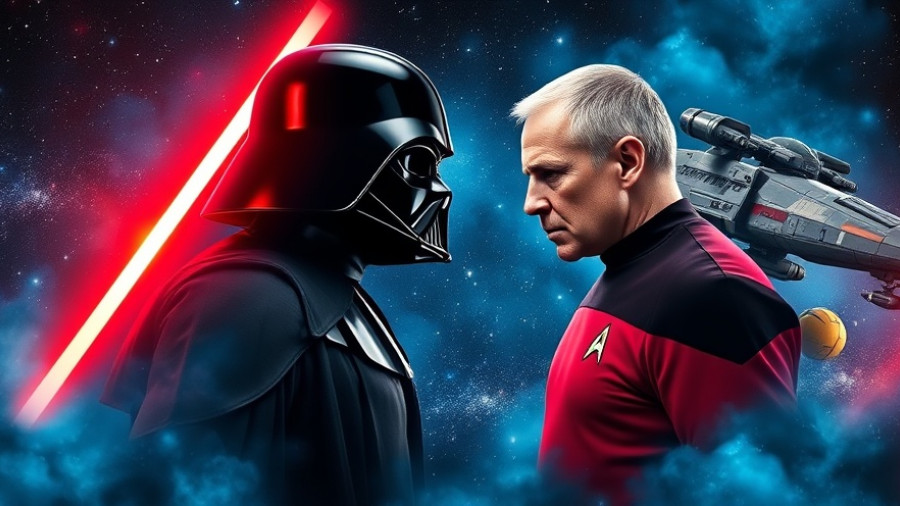
Comic Wars: The Battle for Sci-Fi Supremacy
In the mid-1980s, a captivating battle unfolded not just on screens but on the pages of comic books, defining the rivalry between two of pop culture's biggest giants: Star Wars and Star Trek. As Marvel and DC Comics clashed for dominance, they became the showcase for these beloved franchises, securing their legacies and expanding their universes long after their films had ended. This engagement resulted in an unforgettable chapter in comic history, one that still influences the perceptions of these franchises today.
The Rise of Star Wars and the Battle for Relevancy
Marvel's foray into Star Wars comics began with the release of the iconic film in 1977. By publishing the original run, which spanned nearly a decade, Marvel gleaned immense success at a time when the company faced financial challenges. This period saw Star Wars thrive in comic form, providing fans with vibrant stories that kept their interests alive. Meanwhile, the release of Return of the Jedi in 1983 signaled the end of the original film trilogy, leaving fans hungry for more stories. In a bid to sate this appetite, the comics became a crucial lifeline for the franchise during its hiatus, giving rise to an Expanded Universe that, although now considered non-canon by Disney, played a key role in sustaining interest in Star Wars.
Star Trek’s Resurgence Through Comics
While Star Wars was solidifying its comic-book legacy, Star Trek, which had been dormant for years, experienced a renaissance aided by the success of its film series. Following Star Wars, Paramount quickly grasped the opportunity to bring Star Trek back to prominence. DC Comics, acquiring the rights to Star Trek in 1984, launched a successful comic series that filled the gap between the films, fostering a rejuvenation of interest in the franchise as the series dove back into characters and storylines.
A Time of Competition and Innovation
1984 heralded a vibrant chapter, where Marvel’s Star Wars and DC’s Star Trek ran concurrently. This unique landscape allowed both franchises to flourish as fans debated which featured the superior tales or more compelling narratives. As the rivalry reached a fever pitch, readers engaged more deeply than ever with these iconic universes. The comics provided a fresh lens on old narratives and new adventures — from Jedi warriors wielding lightsabers to the intellectual explorations of the starship Enterprise, these comic contests kept fans buzzing with excitement and anticipation.
The Lasting Impact of the 1980s Wars on Today’s Fandom
The legacy of these competing franchises launched what we now know as modern fandom culture. The comic book rivalry introduced ideas and characters that would later influence not just comic book adaptations but also the broader film and television landscape. Events like Star Wars Day on May 4th and pop culture references, continue to celebrate the everlasting bond between these loyal fanbases.
This nostalgia continues to resonate in today's content landscape as both franchises have revived their stories across various media—streaming series, blockbuster films, and of course, comic adaptations. With today's burgeoning pop culture landscape, the debate between Star Wars and Star Trek remains lively through social media banters, fan meet-ups, and even merchandise sales based on this playful rivalry.
Conclusion: Where Do We Go From Here?
As the 1980s showed us, healthy competition in fandom can lead to exhilarating creativity and innovation. Looking forward, these legendary franchises are still in a battle—not against each other, but alongside one another in the ecosystem of pop culture.
Whether you're Team Jedi or Team Federation, it has become clear that both influences have shaped modern science fiction. As fans, we have much to celebrate and anticipate in this interstellar rivalry that shows no signs of fading away.
 Add Row
Add Row  Add
Add 




Write A Comment